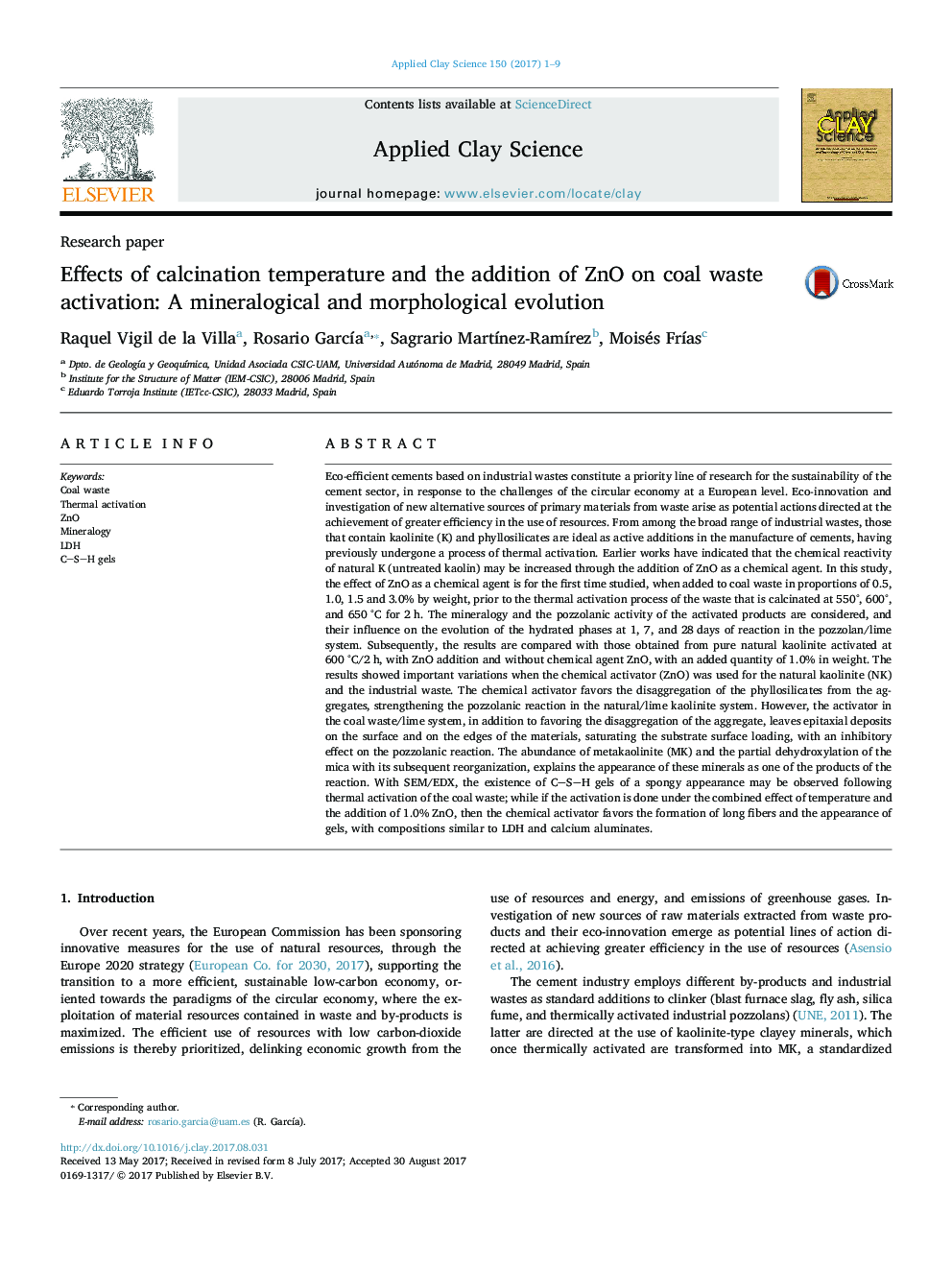| کد مقاله | کد نشریه | سال انتشار | مقاله انگلیسی | نسخه تمام متن |
|---|---|---|---|---|
| 5468477 | 1519038 | 2017 | 9 صفحه PDF | دانلود رایگان |
عنوان انگلیسی مقاله ISI
Effects of calcination temperature and the addition of ZnO on coal waste activation: A mineralogical and morphological evolution
دانلود مقاله + سفارش ترجمه
دانلود مقاله ISI انگلیسی
رایگان برای ایرانیان
کلمات کلیدی
موضوعات مرتبط
مهندسی و علوم پایه
علوم زمین و سیارات
ژئوشیمی و پترولوژی
پیش نمایش صفحه اول مقاله

چکیده انگلیسی
Eco-efficient cements based on industrial wastes constitute a priority line of research for the sustainability of the cement sector, in response to the challenges of the circular economy at a European level. Eco-innovation and investigation of new alternative sources of primary materials from waste arise as potential actions directed at the achievement of greater efficiency in the use of resources. From among the broad range of industrial wastes, those that contain kaolinite (K) and phyllosilicates are ideal as active additions in the manufacture of cements, having previously undergone a process of thermal activation. Earlier works have indicated that the chemical reactivity of natural K (untreated kaolin) may be increased through the addition of ZnO as a chemical agent. In this study, the effect of ZnO as a chemical agent is for the first time studied, when added to coal waste in proportions of 0.5, 1.0, 1.5 and 3.0% by weight, prior to the thermal activation process of the waste that is calcinated at 550°, 600°, and 650 °C for 2 h. The mineralogy and the pozzolanic activity of the activated products are considered, and their influence on the evolution of the hydrated phases at 1, 7, and 28 days of reaction in the pozzolan/lime system. Subsequently, the results are compared with those obtained from pure natural kaolinite activated at 600 °C/2 h, with ZnO addition and without chemical agent ZnO, with an added quantity of 1.0% in weight. The results showed important variations when the chemical activator (ZnO) was used for the natural kaolinite (NK) and the industrial waste. The chemical activator favors the disaggregation of the phyllosilicates from the aggregates, strengthening the pozzolanic reaction in the natural/lime kaolinite system. However, the activator in the coal waste/lime system, in addition to favoring the disaggregation of the aggregate, leaves epitaxial deposits on the surface and on the edges of the materials, saturating the substrate surface loading, with an inhibitory effect on the pozzolanic reaction. The abundance of metakaolinite (MK) and the partial dehydroxylation of the mica with its subsequent reorganization, explains the appearance of these minerals as one of the products of the reaction. With SEM/EDX, the existence of CSH gels of a spongy appearance may be observed following thermal activation of the coal waste; while if the activation is done under the combined effect of temperature and the addition of 1.0% ZnO, then the chemical activator favors the formation of long fibers and the appearance of gels, with compositions similar to LDH and calcium aluminates.
ناشر
Database: Elsevier - ScienceDirect (ساینس دایرکت)
Journal: Applied Clay Science - Volume 150, 15 December 2017, Pages 1-9
Journal: Applied Clay Science - Volume 150, 15 December 2017, Pages 1-9
نویسندگان
Raquel Vigil de la Villa, Rosario GarcÃa, Sagrario MartÃnez-RamÃrez, Moisés FrÃas,